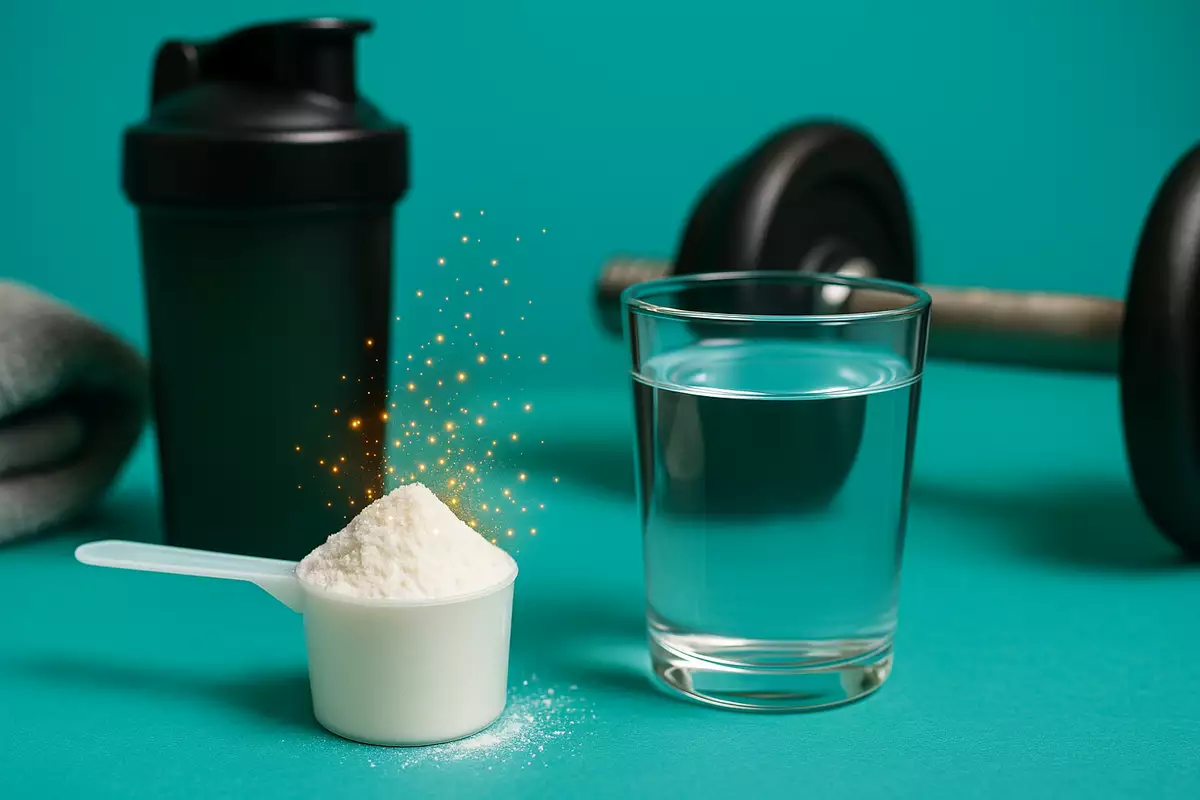Ever felt a weird tingling in your skin after taking a pre-workout? That’s probably beta-alanine doing its job—but it can feel intense if you’re not ready.
This powerhouse amino acid boosts endurance and helps you grind out more reps, but it’s not side-effect-free. If you’ve ever wondered whether those sensations are normal—or even safe—you’re not alone.
In this guide, I’ll break down exactly what beta-alanine does, what side effects to expect, and how to manage them like a pro.
Table of contents
What Are the Side Effects of Beta-Alanine?
Beta-alanine is one of the most researched and effective performance supplements out there—but let’s be real, it comes with a few quirks.
The most talked-about side effect? That tingling sensation known as paresthesia. It often starts 10 to 20 minutes after taking it, usually in the face, neck, or hands. I’ve personally felt it the first time I took 3.2 grams straight—it hit me during warm-up, and for a second, I thought something was off. But it faded in less than an hour.
Aside from tingling, a few people might experience light skin flushing or mild stomach discomfort. These reactions are usually harmless, but they can catch you off guard if you don’t expect them.
If you’re stacking beta-alanine with other pre-workout ingredients like caffeine or creatine, this can amplify the sensation. Learn how to stack smartly in this in-depth guide.
Is Beta-Alanine Safe for Daily Use?

Beta-alanine is absolutely safe when used properly.
Based on clinical studies, it’s considered safe for long-term use—even at doses up to 6.4 grams per day when split throughout the day. The side effects are mostly sensory and not harmful.
I’ve been using it consistently during performance-focused phases for years—especially when training for volume and endurance—and I’ve never had any real issues once I adjusted the way I took it.
It’s important to stick to science-backed dosages. For most people, 3.2–4 grams daily is enough to increase muscle carnosine levels and improve muscular endurance.
If you’re vegan and wondering about natural sources, check out this article on beta-alanine options for plant-based athletes.
How to Manage or Avoid Beta-Alanine Side Effects
Use Sustained-Release Beta-Alanine
This version releases slowly and reduces the tingling drastically.
I personally switched to it during a cutting phase when I was training early in the morning—it helped me stay focused without any distracting sensations.
Split Your Dose
Instead of taking 3.2g at once, go for 1.6g twice a day.
This was a game changer for a client of mine, Emily from the UK, who was anxious about the tingling. Within a week, she adapted with no issues.
Take It With Food
Especially helpful for anyone with mild stomach sensitivity.
Carlos, a client from Spain, used to get queasy when taking beta-alanine on an empty stomach. Pairing it with his protein smoothie fixed it instantly.
Cycle It Right
Timing matters too. To maintain carnosine levels, take beta-alanine consistently for at least 4 weeks. For an optimized approach, see this beta-alanine cycling guide.
Stacking With Taurine? Do It Smart
Some athletes stack beta-alanine with taurine. While they can compete for uptake, smart timing can balance their benefits. Read more on that in this taurine and beta-alanine stack guide.
Who Should Be Cautious with Beta-Alanine?

If you’re new to supplementation or have sensitive skin or digestion, take it slow.
Start with 1–1.5 grams and see how your body responds. I usually hold off recommending beta-alanine to beginners unless they’ve already nailed their basics—training, sleep, nutrition.
But for intermediate and advanced lifters—especially those into CrossFit, high-volume bodybuilding, or HIIT—it can give a real edge.
Also, those prone to anxiety or sensory sensitivity may find the tingling uncomfortable. It’s harmless, but you don’t want it to distract you mentally before a big session.
If you’re using it to boost explosive power or performance, this explosive power guide is worth reading.
Real-World Experiences and Pro Tips
I’ve personally used beta-alanine on and off since 2017.
During one hypertrophy block with lots of supersets and drop sets, it noticeably helped me push deeper into the burn zone. The tingling? Manageable. Annoying sometimes, but never enough to stop me.
Clients’ experiences vary—some don’t notice anything, others feel it and freak out. Education helps. When they know it’s normal, they stop panicking.
Sustained-release forms or spreading the dose throughout the day works almost every time. If you’re combining it with caffeine for an extra boost, check out this beta-alanine and caffeine stack strategy.
For those curious about natural sources, this beta-alanine food source breakdown can help you supplement smarter.
Final Thoughts: Should You Still Take Beta-Alanine?

If your goal is improved muscular endurance, better high-rep performance, or increased work capacity—yes, beta-alanine is absolutely worth considering.
The side effects are mild, temporary, and manageable. For me, the benefits have far outweighed the odd tingling feeling.
Just don’t go all-in on your first day. Build up, listen to your body, and adjust.
Beta-alanine isn’t magic, but used smartly, it can definitely help you train harder and longer—and with the right strategies, you’ll barely notice the side effects.



Leave a Reply